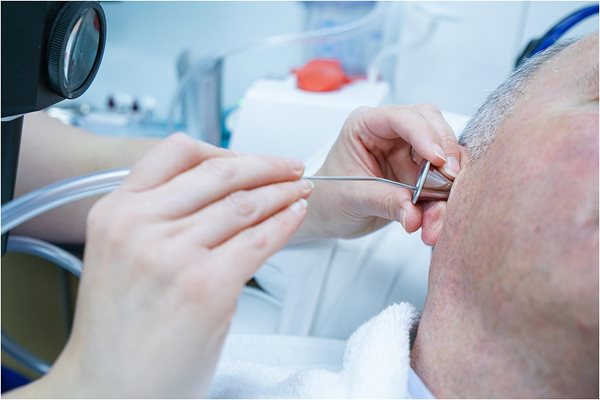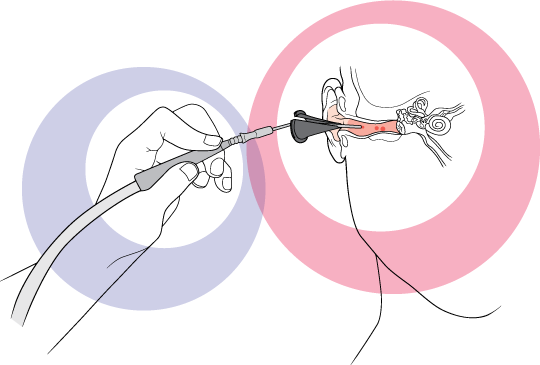Identifying Those Who Should Avoid Manual Instrument Ear Wax Removal
Last Updated on 3rd May 2024 by Faye Yearsley
Ear wax, scientifically known as cerumen, is a natural substance produced by the human body to protect the ear canal from debris, dust, and bacteria. While ear wax is essential for maintaining ear health, excessive buildup can lead to discomfort, hearing loss, and other complications. To address this issue, many individuals opt for the ear wax to be removed. There are three methods including manual instrument removal, irrigation and microsuction. However, it is important to recognise that not everyone is suitable for these type of procedure. In this article, we will discuss the individuals who should avoid manual instrument ear wax removal and explore alternative solutions.
Why is Manual Instrument Ear Wax Removal Popular?
Manual instrument ear wax removal is a widely used method for getting rid of excessive ear wax. It involves using various tools, such as curettes or suction devices, to manually remove the wax buildup from the ear canal. This technique is often performed by healthcare professionals, including audiologists and ear, nose, and throat specialists. Although effective when carried out correctly, it is crucial to identify those who should avoid this procedure to prevent potential harm or complications.
There are several reasons why manual instrument ear wax removal is popular:
- Effectiveness: It allows audiologists and ENT specialists to directly target and remove the buildup, providing immediate relief to patients.
- Precision: The use of specialised tools in manual instrument ear wax removal allows for precise manipulation and removal of the wax. This precision helps minimise the risk of damage to the ear canal or other delicate structures within the ear.
- Accessibility: Many healthcare professionals, including audiologists and ear, nose, and throat specialists, are trained in manual instrument ear wax removal. This makes it widely accessible to individuals seeking professional help for their ear wax issues.
While manual instrument ear wax removal has its advantages, it is important to understand that not everyone is a suitable candidate for this procedure. Certain individuals should avoid manual instrument ear wax removal due to specific factors that may increase the risk of complications or harm.
Individuals Who Should Avoid Manual Instrument Ear Wax Removal
- Individuals with a History of Ear Infections: People who have a history of recurrent ear infections should avoid manual instrument ear wax removal. The delicate nature of their ear canals makes them more susceptible to further infections or damage during the procedure. In such cases, alternative methods that do not involve direct manipulation, such as microsuction or oil-based drops, may be more appropriate.
- Individuals with eardrum Perforation: Those with a perforated eardrum, should refrain from manual instrument ear wax removal. Inserting instruments into the ear canal can potentially worsen the perforation, leading to severe complications, including middle ear infections or hearing loss.
A perforated eardrum can be caused by various factors, such as trauma, infection, or previous surgeries. When the eardrum is perforated, it loses its ability to protect the middle ear from external contaminants, making it more susceptible to infections. In such cases, alternative methods like microsuction, may be safer options.
- Foreign Bodies in the Ear Canal: Individuals who suspect the presence of foreign bodies, such as small toys,cotton wool or other objects, in their ear canal should avoid manual instrument ear wax removal. Attempting to remove foreign bodies without the necessary expertise can push them further into the ear canal, potentially causing damage or discomfort. Seeking professional medical assistance is crucial in such cases to ensure safe and effective removal.
Foreign bodies in the ear canal can be a common occurrence, especially in children or individuals who work in environments where small particles or insects may enter the ear.
- Narrow or Curved Ear Canals: People with naturally narrow or curved ear canals are more prone to difficulties during manual instrument ear wax removal. The risk of injuring the ear canal or causing trauma to the delicate structures increases due to the limited space for moving the instruments.
Narrow or curved ear canals can make it challenging to safely insert and manipulate instruments for ear wax removal.
- Known Allergies to Instrument Materials: Some individuals may have allergies or sensitivities to the materials used in manual instrument ear wax removal tools, such as latex or specific metals. It is essential for them to inform their audiologist about their allergies to avoid potential adverse reactions or complications during the procedure. Alternative ear wax removal methods can be considered in such cases.
Allergies to instrument materials can cause allergic reactions, including itching, redness, or swelling, when the materials come into contact with the skin or mucous membranes.
Alternative Ear Wax Removal Methods
For individuals who should avoid manual instrument ear wax removal, several alternative methods can effectively remove excessive wax and alleviate related symptoms. These methods include:
- Irrigation: involves gently flushing the ear canal with warm water using a specialised device. This method helps dislodge and flush out the ear wax without the need for direct manipulation. It is important to note that irrigation may not be suitable for individuals with certain medical conditions or a history of ear surgeries. Consulting with a healthcare professional such as an audiologist is important to determine whether irrigation is the right option.
- Oil-Based Ear Drops: Applying oil-based ear drops, such as mineral oil, can help soften the ear wax, making it easier to remove naturally. These drops are typically applied for a few days before undergoing irrigation or microsuction. However, individuals with grommets or a known perforation should consult with a healthcare professional before using these drops, as they may have specific considerations or restrictions.
- Microsuction: is a procedure commonly performed by audiologists. It involves using a suction device with a small, gentle tip to remove ear wax. This method is particularly useful for individuals with narrow or curved ear canals who may be at higher risk during manual instrument removal.
Microsuction is a specialised form of suction-based ear wax removal that utilises a small, gentle suction device to remove wax from the ear canal. It is considered a safe and effective alternative to manual instrument removal for individuals with anatomical challenges.
It is important to consult with a healthcare professional or an audiologist to determine the best ear wax removal method based on individual circumstances. They can provide personalised guidance and recommendations to ensure safe and effective wax removal while minimising the risk of complications.
In conclusion, manual instrument ear wax removal is a popular method for addressing excessive ear wax. However, it is crucial to identify individuals who should avoid this procedure due to factors such as ear infections, perforated eardrums, foreign bodies, narrow or curved ear canals, or allergies to instrument materials. Alternative methods, including irrigation, oil-based ear drops, or microsuction, can be considered for safe and effective wax removal. Consulting with a healthcare professional or an audiologist is essential to determine the most suitable approach and minimise the risk of complications.
Q1: Who should avoid manual instrument ear wax removal?
Individuals with a history of ear infections, those with tympanic membrane perforation, individuals with foreign bodies in the ear canal, and those with narrow or curved ear canals should avoid manual instrument ear wax removal.
Q2: Why should individuals with a history of ear infections avoid manual instrument ear wax removal?
Individuals with a history of ear infections should avoid manual instrument ear wax removal because it can disrupt the healing process, introduce bacteria, and lead to recurrent infections. Alternative methods like irrigation or oil-based drops may be more appropriate.
Q3: What should individuals with a perforated eardrum do instead of manual instrument ear wax removal?
Individuals with a perforated eardrum should refrain from manual instrument ear wax removal. They should seek alternative ear wax removal techniques that do not involve inserting instruments into the ear, such as suction devices or microsuction.
Q4: What alternative ear wax removal methods can be considered for individuals with narrow or curved ear canals?
For individuals with narrow or curved ear canals, alternative methods such as irrigation or microsuction can be considered. These methods can be performed more safely and effectively by an audiologists.







